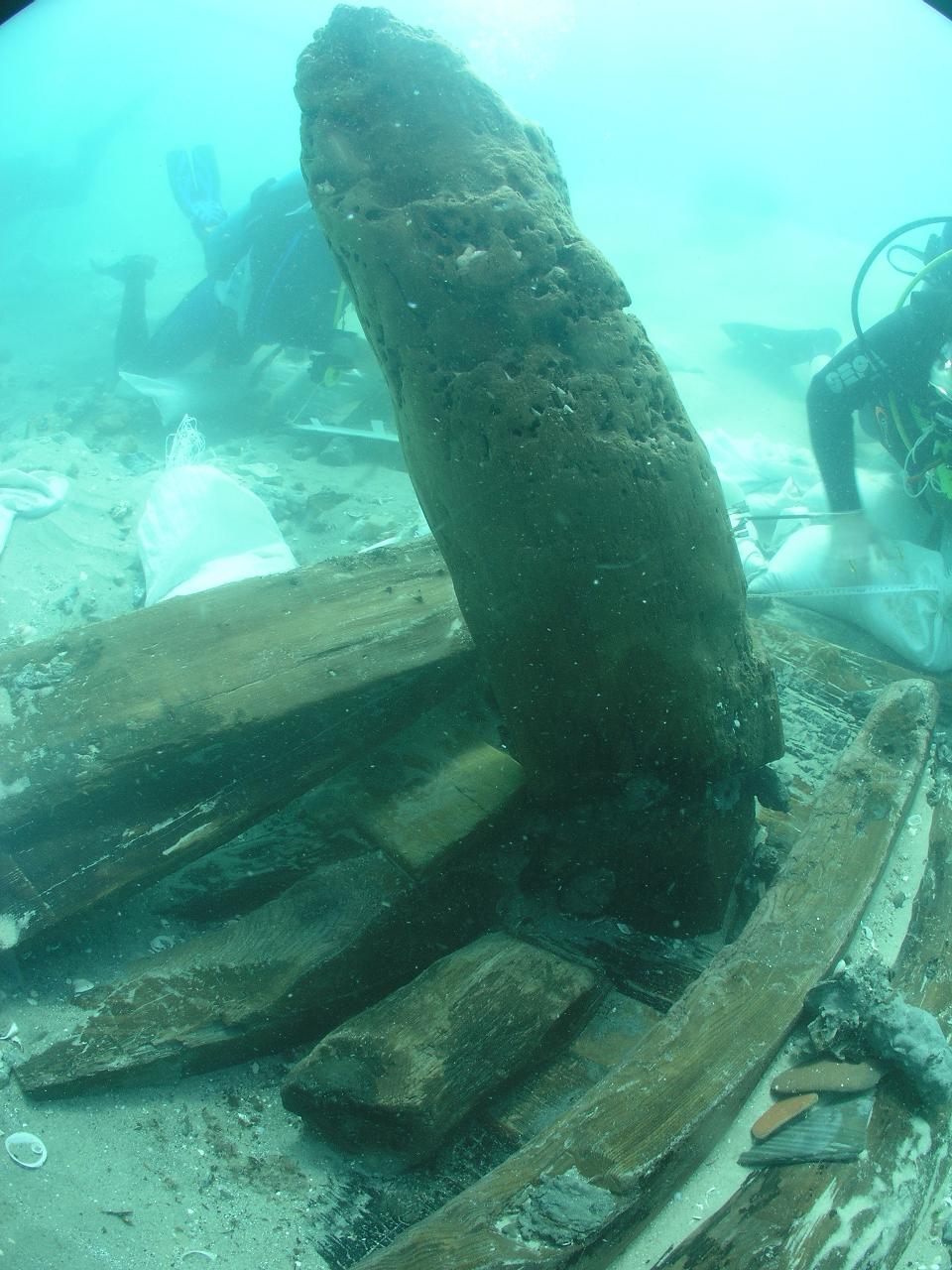A unique archaeological discovery of the Institute of Maritime Studies at the University of Haifa in difficult sea conditions: a Byzantine mast on a ship that sank near the coast of Dor in the sixth century AD

*Sea conditions turned a two-week excavation into a season and a half; The diggers could dig for a few minutes at a time; Until the last moment, they refused to determine that it was a mast - when they finally reached the connection with the ship's hull, it was possible to say with certainty: we uncovered a Byzantine mast for the first time*
A unique find in the world was revealed these days by the researchers of the Leon Recanati Institute of Maritime Studies and the students of the Department of Maritime Civilizations at the University of Haifa: for the first time, a wooden mast of a ship from the Byzantine period was discovered in the "Dor 2006" shipwreck south of Dor Beach.
The "Dor 2006" shipwreck was discovered in 2006 by a fisherman from Moshav Dor, south of the Dor beach lagoon. The tests of the wood samples taken from it will date it to the sixth century AD (Byzantine period). Now, with the end of the second season of excavations, which is led by Dr. Yaakov Kahanov, head of the Leon Recanati Institute of Maritime Studies and the Department of Maritime Civilizations, the hull panels, the floor and the ribs of the ship have been uncovered, as well as a unique find: the lower part of the ship's mast, when it is in its original place at home the ship's mast. According to Dr. Kahanov, to this day no mast of a Byzantine ship has been uncovered in maritime excavations and this is actually the first time that maritime archaeologists have touched such a wooden mast under the surface of the sea.
Already with the uncovering of the ship, during the previous excavation season, the researchers noticed that one of the trees was different from the others: it was a large and massive wooden column relative to the other parts of the ship that seemed to be positioned vertically to the hull. The researchers assumed that they were going to uncover for the first time a mast of a ship from the Byzantine period, but they also knew that it made more sense that in the end it would turn out to be just another part of the bottom of the ship.
The conditions of the excavation did not make it easy for them either. The location of the wreck - about 100 meters from the shore in the crisis zone and at a depth of 3-4 meters - made the excavations very difficult. "Even in a calm sea, digging like this requires a lot of experience, but the sea is not calm. In fact, the sea conditions allowed us only a few minutes at a time. A two-week job turned into a season and a half's work," said Dr. Kahanov.
However, finally the diggers were able to get right to the place where the tree is connected to the body and thus it was possible for them to definitively determine - it is indeed the mast of the ship. "This finding may shed light on the mast, on the way it is connected to the ship, and of course on the ship's hull and its construction method. It is possible that this relic will also teach about the sail, a subject that arouses great interest in the international scientific community", concluded Dr. Kahanov.
Volunteers from Israel and abroad participate in the excavation under the professional guidance of the maritime workshop team of the Institute for Maritime Studies. We hope that with the end of the current excavation season we will be able to extract the most data on the structure of the ship and its contents so that we can study and understand the structure of the ship. The ship was excavated with the help of the National Science Foundation, the Hecht Foundation and private donors.

3 תגובות
Emperor Heraclius noticed a Byzantine tower 1000 years after the Greco-Persian War
They finally found my treasure ship that sank during the Persian Wars in 612
Speaking of discovery at sea,
Found abandoned in the street near a bottle recycling container, a book from a special edition for the Israel Ports Authority from about 40 years ago, called: "Israel and the Sea / Collection".
The book, which is a real treasure (published by M. Newman Books Ltd. in collaboration with the Israel Navy, Hacenter, Haifa) is valued today at about 4 million NIS, and it is not for sale.
What interests us, whether as archaeologists or as curators, is also the story and the contexts behind the discovery, the find and the revealed story. For, the "treasure" was found even a day after the disturbances that followed the news "incident" at sea..
The book Israel and the Sea/Collection deals with the following 8 chapters and/or chapters to show the connection between the people of Israel and its generations with the sea and the affection that his sons have had for him since time immemorial.